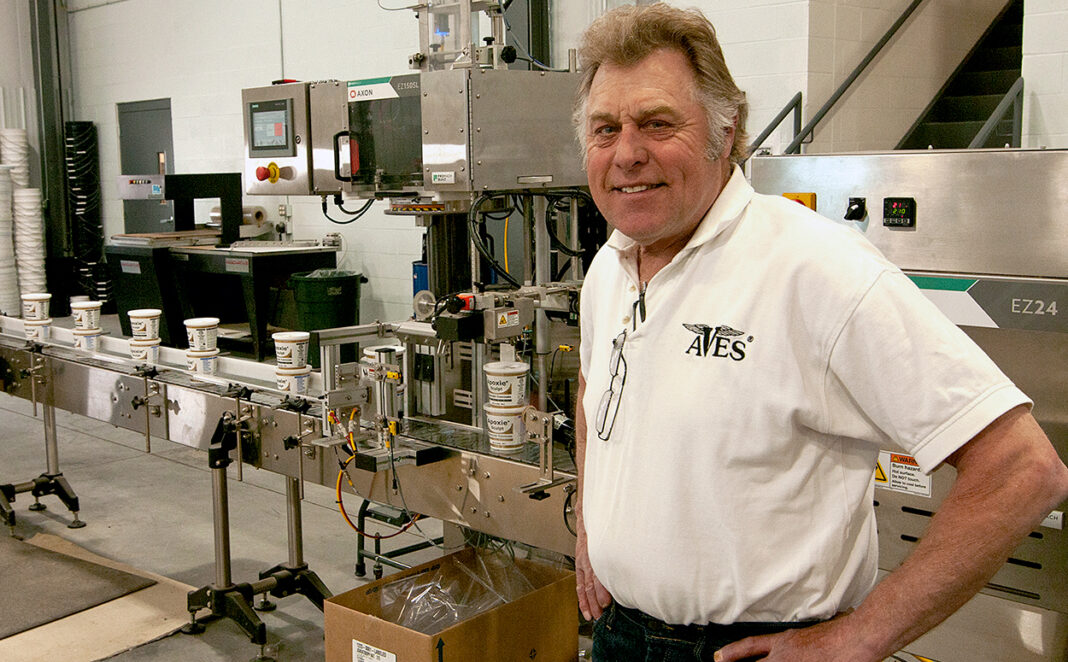Submitted by Amanda Connelly, St. Croix EDC
HUDSON, WI – Dave Brummel has a larger-than-life personality. In many ways, he is at heart, a showman. In another life he might have donned a top hat, epaulets and a whip as the ringmaster in The Greatest Show on Earth. His enthusiasm is infectious, and he always has a story or two up his sleeve.
Brummel is also an extraordinary entrepreneur, a self-made man in the old-world sense. He is someone who rolled up their sleeves, got their hands dirty, some might argue all the way up to his elbows, and built his business from the ground up out of clay.
Brummel’s business, Aves Studio, won the St. Croix Economic Development Corporations’ (EDC) 2023 Small Business of the Year Award.
The semitrailer out front promoting Aves Taxidermy and Cheese has stood as a local landmark in Hudson for more than 40 years. Brummel married into the cheese business when he married his wife of 47 years, Sandy, whose father was a master cheese maker. A true entrepreneur, Brummel assisted his father-in-law in the cheese business, tried his hand at growing Christmas trees as a way to finance his four daughters’ education, is a master taxidermist and a beekeeper, but he was destined to make his name in clay.
Brummel grew up with 10 siblings on a dairy farm not far from Watertown, Wisconsin.
Surrounded by a landscape of woods and water filled with wildlife, Brummel fell in love with hunting, fishing and trapping, ways to explore the rural landscape that fueled his imagination.
At the age of 11, Brummel used the money he had made from trapping muskrats to pay for his first correspondence course in taxidermy.
“Taxidermy was a way to express the artistic ability that I’d been given. I have a knack for it and I knew that very early in my life,” Brummel said.
It was a purchase that would pay dividends for the rest of his life.
Clay is one of the foundational materials in the taxidermy process. It was also the weakest link. It can be applied to an armature, used to set eyes and ears, and sculpted into the shape of the mount. Once it hardens, it can be painted, and the fur or feathers attached.
By the time he was 13, Brummel had built a budding taxidermy business. As he perfected his craft, his mounts were becoming more popular. He had experimented with almost every kind of clay available, and he was not satisfied. The existing clays required firing to harden correctly, but taxidermists used them as self-hardening. As a result, they didn’t have the required strength or elasticity causing them to crack, shrink and peel. They were also very alkaline in nature which would react chemically with leather and other materials and cause glass eyes and other features to change colors over the years.
Brummel did what any good entrepreneur would do, he made his own.
Although Brummel had a thriving taxidermy business, by the time he entered college he intended to become a veterinarian. It wasn’t until his internship senior year that he was informed that because he was colorblind, he would not be able to complete his degree in veterinary medicine.
“Color blind people were not accepted into veterinary school, but they have an advantage in the clay business,” Brummel explained. “I see things you don’t. It’s just grays and browns to you, but I see a whole world in there and I’m able to do things with it that other people can’t.”
In hindsight, although extremely disappointed Brummel sees that rejection as a moment when fate intervened.
“Once I realized that I wasn’t going to be a veterinarian, I think the good Lord put it in my head I had something bigger to do and it was an even bigger challenge,” Brummel said.
Brummel put the knowledge of chemistry he had acquired while studying to become a vet to work.
By the time he sold his first synthetic clay in 1978, he had already created 33 different recipes.
“I liken it to the process of making a cake. You combine the flour, the butter, the eggs and the sugar and you make your cake. That’s how this works. I buy raw materials, some of them are natural from minerals, some are minerals that have been patented and have different properties than when they were dug out of the ground. Then I combine them in a proprietary process to meet my expectations,” Brummel explained.
Although he was able to sell the different variations of clay, they were limited to specific uses, and he struggled financially.
Brummel knew there had to be a better solution and proved it by combining all the best characteristics from his 33 recipes including into a new product that he called “Eye Set Clay.”
The “secret sauce” included the addition of fiber, the equivalent of rebar, ingredients which were non-toxic and the most innovative feature of all, it was made to self-hardening. Brummel’s innovations revolutionized the synthetic clay industry and earned him the moniker “The Father of Self-hardening Clay.”
Brummel’s own taxidermy business was experiencing significant success and word of his invention started to spread within the industry.
“It turns out the uses taxidermists put the clay through are so extensive and brutal … if you can survive the taxidermy industry, you can survive anything,” Brummel said.
People began to call Brummel’s invention “Critter Clay,” a brand he would later trademark.
Next week will be “St. Croix EDC 2023 Small Business of the Year Winner named – Part II” that will conclude with the story of the big break for Dave Brummel and Aves Studio.






